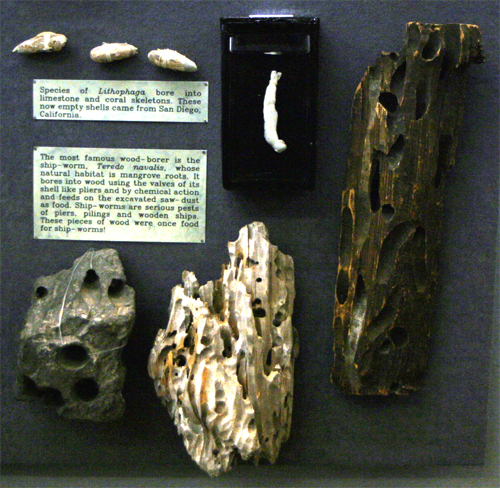
BORING LAMELLIBRANCHS | |
Seven groups of lamellibranchs have evolved the ability to penetrate and live beneath the surface of firm substrates – peat, clay, sand-stone, wood, shell, coral, and rock. All boring bivalves begin to excavate after the larvae settle. They slowly enlarge and deepen the burrow as they grow so that the animal is locked forever within its burrow with only a siphon projecting through a small surface opening. If removed from its burrow, a boring bivalve is helpless and cannot burrow anymore. In the great majority of species, drilling is a mechanical process – the anterior ends of the valves of the shell, which are frequently serrated, abrade the surface. Some boring bivalves rotate and their burrows are round in cross-section. Others remain attached in one place and the burrow takes the shape of the shell. The strange holes seen in rocks around Scottish shores are the work of the piddock, Pholas dactylus, which is only one of many edible mussels. The most famous woodborer is the shipworm, Teredo navalis, whose natural habitat is mangrove roots. It bores into wood using the valves of its shells like pliers and feeds on the excavated sawdust. Shipworms are serious pests of piers, pilings and ships. Pieces of wood have been eaten by shipworms. Species of Lithophaga bore into limestone and coral skeletons. These now empty shells came from San Diego, California , U.S.A. |
 |






